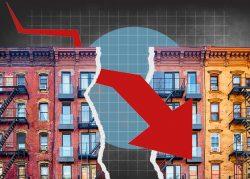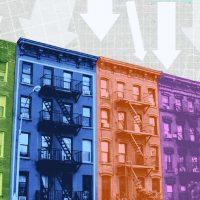 Brooklyn home sales fell at a record rate in Q3
Brooklyn home sales fell at a record rate in Q3
Trending
Brooklyn’s median sales price hit record high in Q1
Borough’s median price is now $900K

It was a banner month for Brooklyn’s sales market, with pricing and transactions both seeing increases in the first quarter of the year.
The median sales prices in Brooklyn rose for the second quarter in a row, hitting an all-time high of $900,000, according to a Douglas Elliman report by the appraisal firm Miller Samuel. That’s an increase of nearly 3 percent from the fourth quarter of 2020, and a jump of 12 percent from the same time last year.
There were 2,822 sales recorded in the first quarter, the highest number in 14 years. Listing inventory had been declining in Brooklyn for the past five quarters, but this quarter, it rose by 9.4 percent to 2,885.
Inventory typically falls as sales rise, but this uptick indicates a return to seasonal patterns, with sellers — anticipating a busy spring season — bringing more homes to market, according to Jonathan Miller, who authored the report.
Read more
 Brooklyn home sales fell at a record rate in Q3
Brooklyn home sales fell at a record rate in Q3
 Brooklyn and Queens Q2 sales fall at highest rate in decade
Brooklyn and Queens Q2 sales fall at highest rate in decade
Queens is also finally having a moment: With 3,282 sales, this quarter marks the first uptick in sales activity since the pandemic began.
The median sales price in the borough was $660,000, an increase of nearly 12 percent from the same time last year. And while the number of available homes dipped 7.4 percent from the previous quarter, it was up by 23.4 percent from the same period in 2020.
The patterns in Brooklyn and Queens have mimicked those of the suburbs since lockdown began, with limited inventory and increased demand pushing prices higher, Miller said. It’s a sharp contrast from the Manhattan market, which is just now beginning to see signs of a rebound.
Bidding wars also remain common in the two boroughs, though in Brooklyn, the competition isn’t as fierce as it was in 2020. In the first quarter, bidding wars accounted for 8.5 percent of closings compared to 16.9 percent last year.
Queens saw the opposite: Bidding wars accounted for 12.8 percent of closings, compared to 5.1 percent a year ago.
A big reason for this is that most sellers are continuing to price homes accurately, rather than too high in the hopes that they’ll get lucky.
“Whatever the relationship of last year, seeing bidding wars coming out of this lockdown period shows you the intensity of demand that remains in the market,” Miller said.



